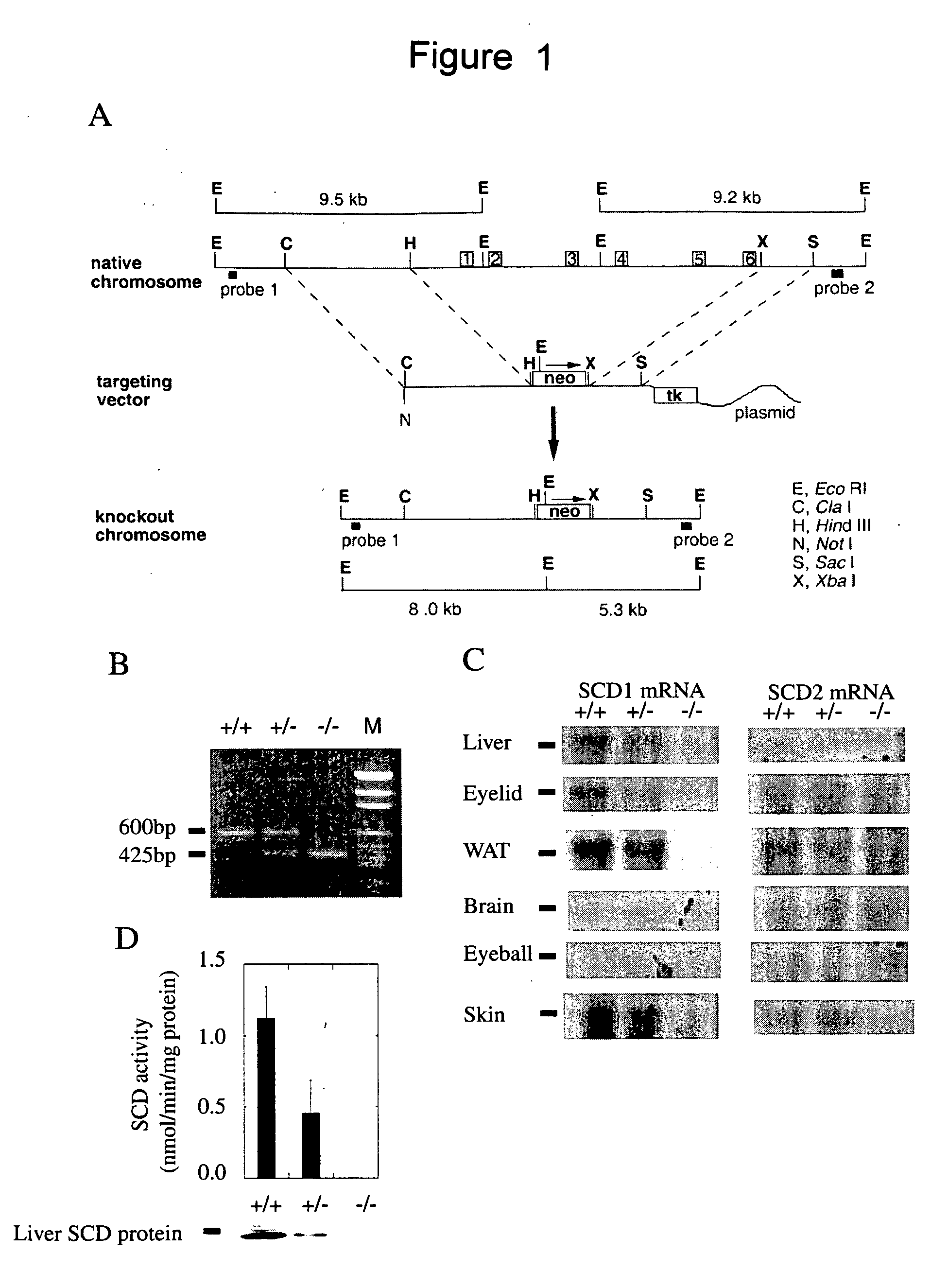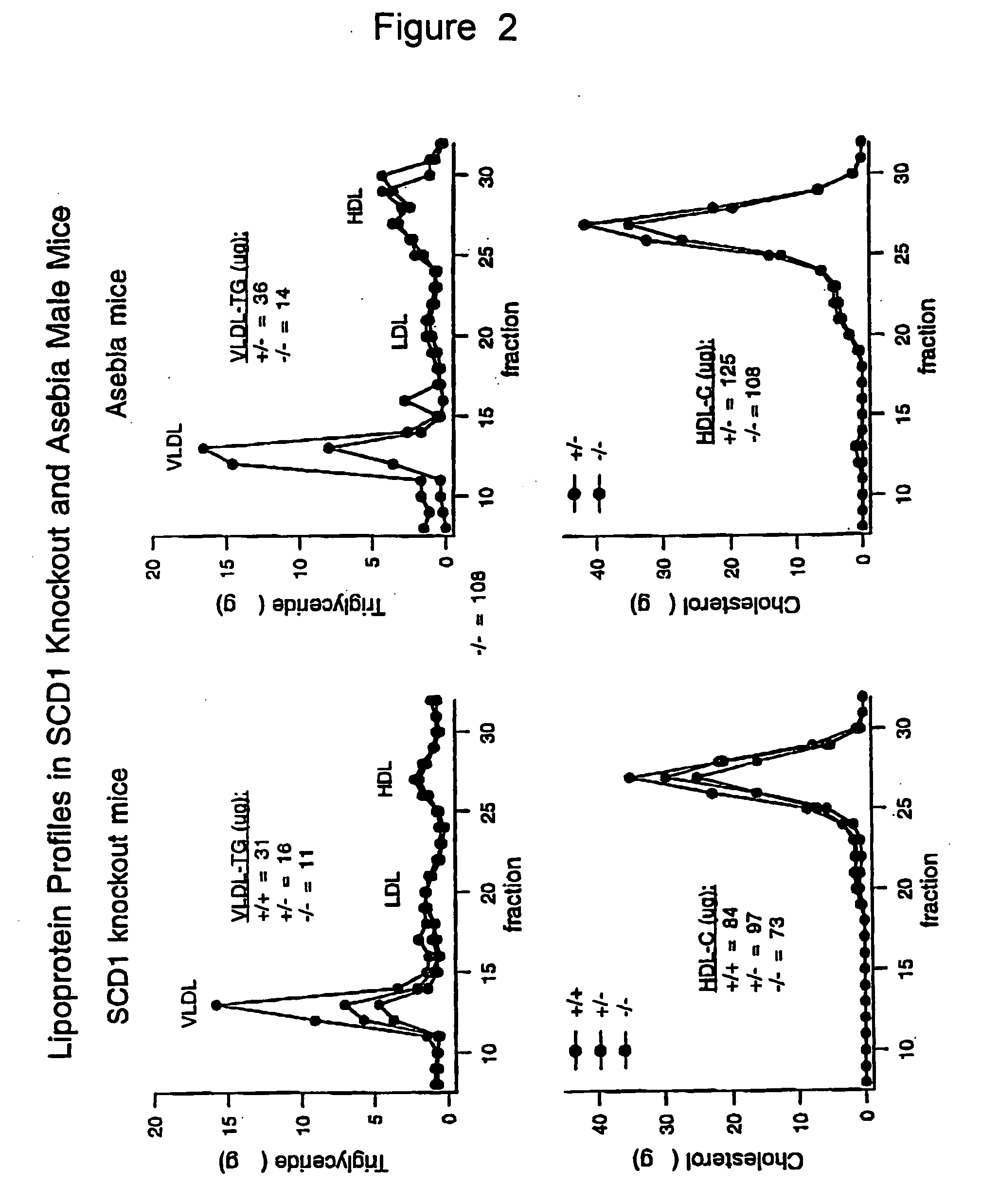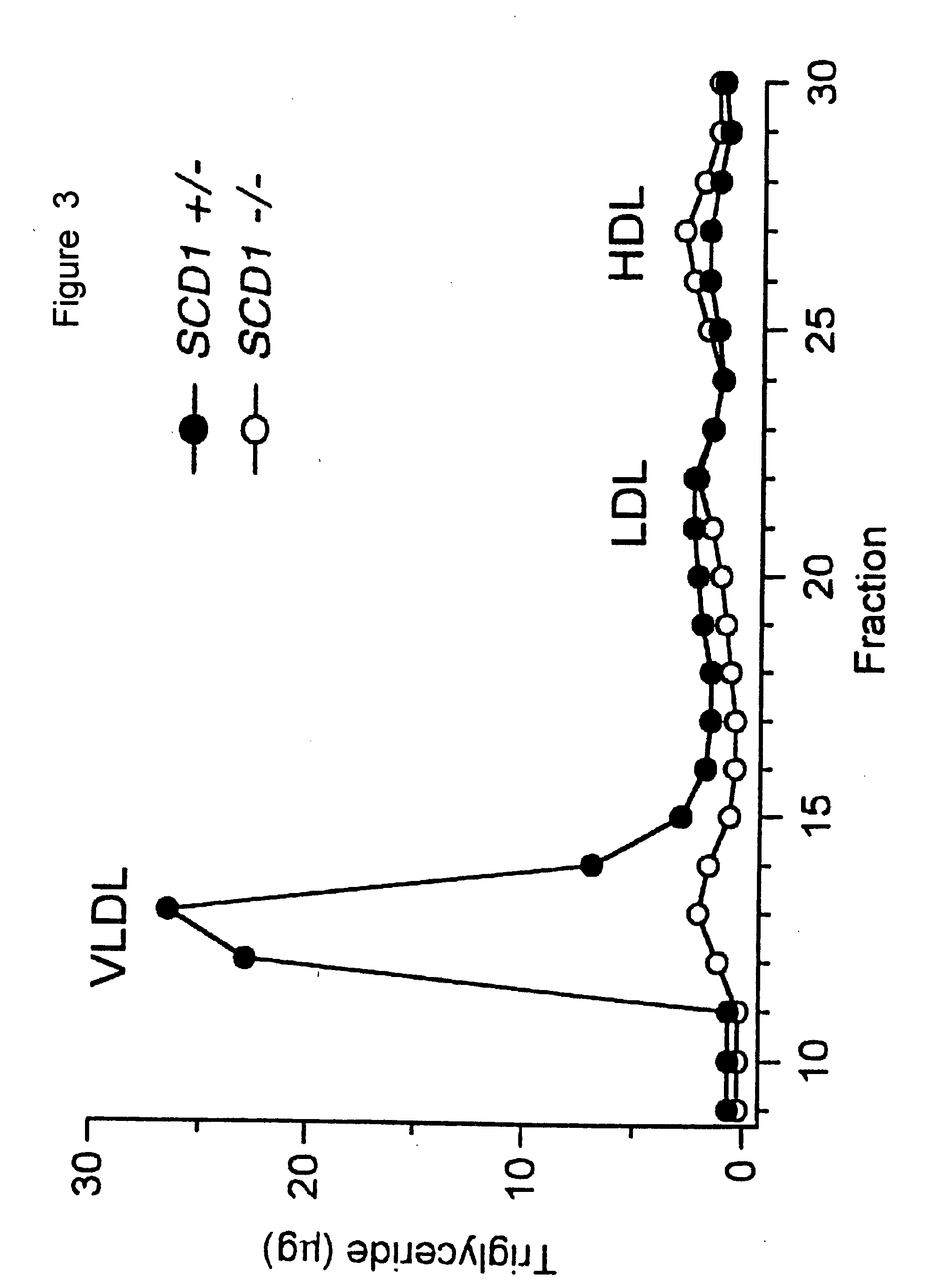Methods and compositions using stearoyl-CoA desaturase to identify triglyceride reducing therapeutic agents
a technology of stearoylcoa desaturase and triglyceride reduction, which is applied in the direction of drug compositions, metabolic disorders, cardiovascular disorders, etc., can solve the problems of inability to identify specificity, increase the complexity of determining specificity, and obscure the role of scd studies in non-human animals, so as to achieve important cardioprotective benefits and lower serum triglyceride levels
- Summary
- Abstract
- Description
- Claims
- Application Information
AI Technical Summary
Benefits of technology
Problems solved by technology
Method used
Image
Examples
example 1
Disruption of Stearoyl-CoA Desaturase1 Gene in Mice Causes Decreased Plasma Triglycerides Levels, as well as Other Defects in Lipid Metabolism
[0228] This example identifies, for the first time, specific SCD1 biological activities in mouse by characterizing an SCD1 gene specific knock-out mouse.
[0229] To investigate the physiological functions of SCD, we have generated SCD1 null (SCD1− / −) mice. The lipoprotein profile of SCD1 null (knock-out) mice demonstrates a striking decrease in triglyceride (i.e., VLDL) levels while maintaining approximately normal HDL and LDL levels. This result confirms that a mutation in SCD1 is a causative mutation of a low triglyceride (TG) lipoprotein profile in mice, and is distinct from other SCD isoforms in the mouse in this regard. Due to the severity of this phenotype it is clear that other SCD isoforms are unlikely to affect TG levels to such a great extent.
[0230] Targeted Disruption of the SCD1 Gene
[0231]FIG. 1A shows the strategy used to knock ...
example 2
Demonstration of Significant Correlation Between the 18:1 / 18:0 FFA Ratio and TG / HDL Levels in Humans
[0262] This example demonstrates, for the first time, that delta-9 desaturase activity in humans correlates directly with serum levels of triglyceride (VLDL) and inversely with serum HDL level and total serum cholesterol.
[0263] Experimental Design:
[0264] Plasma from a total of 97 individuals was analyzed for fatty acid content by gas chromatography (GC). Total free fatty acid (FFA) content was measured and the ratios of oleate to stearate (18:1 / 18:0) and palmitoleate to palmitate (16:1 / 16:0) were computed, defined as the desaturation indices, as above. We sought to find a relationship between these ratios and three clinical indicators; plasma TG (triglyceride) levels, plasma HDL (high density lipoprotein) levels, and total plasma cholesterol.
[0265] Patient Sample:
[0266] The patient sample was chosen to maximize phenotypic diversity in terms of HDL. Within our cohort, 21 individua...
example 3
Plasma Fatty Acid Analysis in a Mouse Model of Dyslipidemia
[0285] In order to confirm the above described relationship observed in humans between the 18:1 / 18:0 desaturation index and TG levels. We also performed plasma fatty acid analysis in a mouse model of the human disease FCHL. In the mouse hyperlipidemic strain (“hyplip”) TG levels are elevated as compared to wild-type.
[0286] The hyperlipidemic mouse HcB-19 showed an elevated 18:1 / 18:0 desaturation index. This mouse model of familial combined hyperlipidemia (HcB-19) displays elevated levels of TG, cholesterol, as well as increased secretion of VLDL and apoB (Castellani et al, Mapping a gene for combined hyperlipidaemia in a mutant mouse strain. Nat Genet;18(4):374-7 (1998).
[0287] Plasma fatty acid analysis demonstrated that these animals have a significantly elevated 18:1 / 18:0 ratio when compared to unaffected controls of the parental strain (FIG. 13). The HcB-19 animals did not, however, show a significant elevation of the ...
PUM
| Property | Measurement | Unit |
|---|---|---|
| volume | aaaaa | aaaaa |
| volume | aaaaa | aaaaa |
| volume | aaaaa | aaaaa |
Abstract
Description
Claims
Application Information
 Login to View More
Login to View More - R&D
- Intellectual Property
- Life Sciences
- Materials
- Tech Scout
- Unparalleled Data Quality
- Higher Quality Content
- 60% Fewer Hallucinations
Browse by: Latest US Patents, China's latest patents, Technical Efficacy Thesaurus, Application Domain, Technology Topic, Popular Technical Reports.
© 2025 PatSnap. All rights reserved.Legal|Privacy policy|Modern Slavery Act Transparency Statement|Sitemap|About US| Contact US: help@patsnap.com



